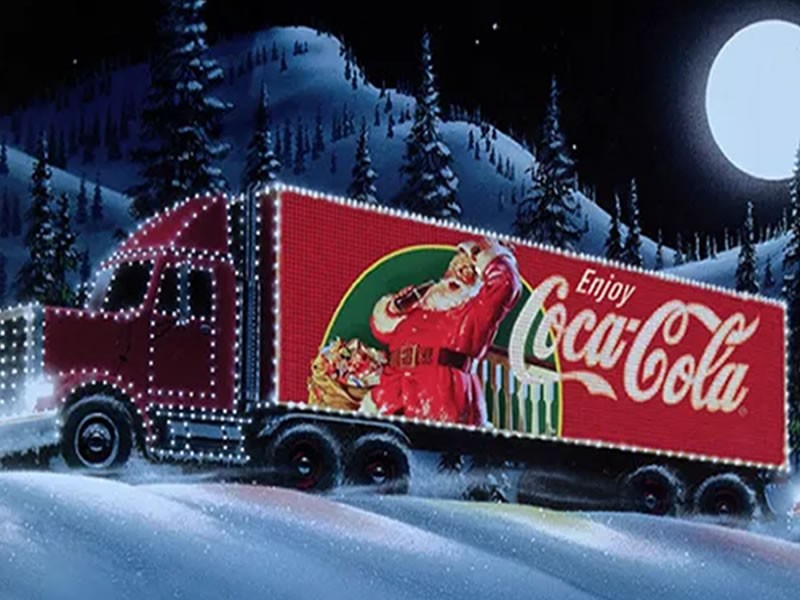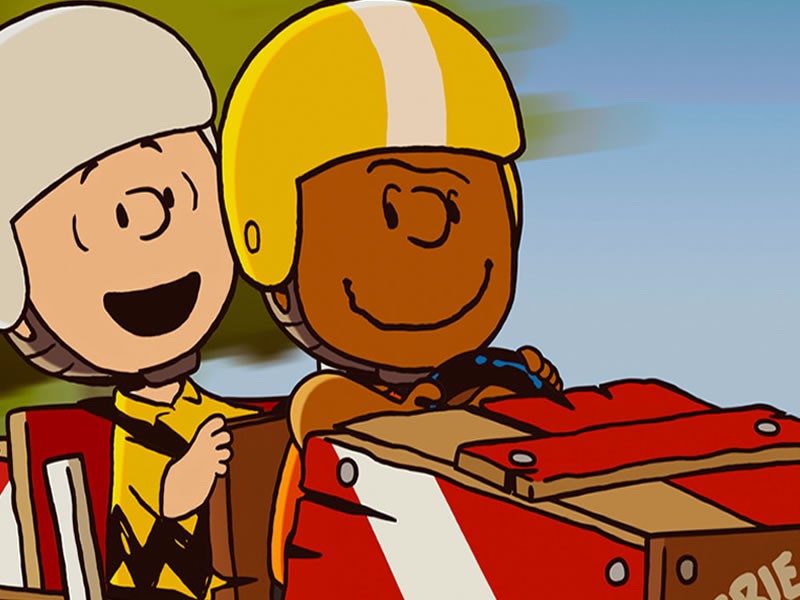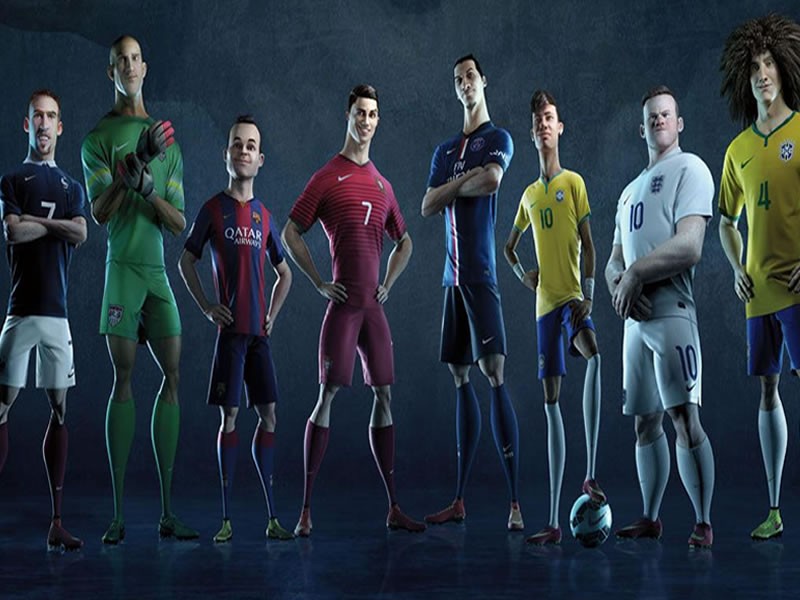Insight Blog
Agility’s perspectives on transforming the employee's experience throughout remote transformation using connected enterprise tools.
9 minutes reading time
(1860 words)
Navigating the Complexities of Animated Commercials in Modern Advertising
Mastering the intricacies of animated commercials in modern advertising requires finesse and strategic insight. Dive into the dynamic world of animation to captivate audiences and navigate the complexities of today's competitive landscape.
In the fast-paced world of modern advertising, animated commercials have become a prominent and effective tool for marketers to engage with their target audience. Animated commercials offer a unique blend of creativity, storytelling, and visual appeal that can captivate viewers and leave a lasting impression.
However, navigating the complexities of animated commercials requires a deep understanding of the medium, its challenges, and its potential. In this blog post, we will explore the intricacies of animated commercials in modern advertising.
The Power and Potential of 3D Animated Commercials
In advertising, 3D animated commercials emerge as a breath of fresh air, offering a level of versatility and creativity unparalleled by traditional advertising methods. With 3D animation, advertisers possess a boundless canvas capable of bringing anything from imaginative worlds to hyper-realistic product showcases to life.
One of the most notable advantages of 3D animated commercials lies in their ability to simplify intricate narratives. Whether showcasing complex product features or detailing elaborate functionalities, 3D animation has the power to distill these complexities into visually understandable formats. This clarity enhances the accessibility of the product or service, significantly boosting its appeal and efficacy in capturing the attention of potential customers.
However, the impact of 3D animation extends far beyond mere simplification. Its inherently captivating nature ensures that these commercials are informative and inherently entertaining. By seamlessly blending information with entertainment, 3D animated commercials captivate audiences, fostering higher levels of engagement and enhancing brand recall.
Yet, the potential of 3D animation stretches even further. As technology advances, advertisers can explore new frontiers in immersive storytelling, leveraging augmented reality (AR), virtual reality (VR), and interactive elements to create unforgettable brand experiences. This evolution signifies that 3D animated commercials are not just a medium for advertising; they are catalysts for innovation, pushing the boundaries of creativity and audience engagement in the ever-evolving marketing landscape.
Why Animated Commercials in Modern Advertising Right Choice for Your Business
In today's fast-paced and visually-driven world, animated commercials stand out as a strategic choice for businesses seeking to captivate audiences and drive brand engagement.
Unlike traditional forms of advertising, animated commercials offer a dynamic canvas for storytelling, allowing businesses to convey their message with creativity and impact. Through the use of vibrant visuals, imaginative characters, and captivating narratives, animated commercials have the power to resonate with audiences on a deeper level, forging emotional connections that leave a lasting impression.
So, animated commercials provide businesses with unparalleled flexibility and versatility in conveying complex ideas and concepts. Whether it's explaining intricate product features or simplifying abstract concepts, animation allows for the visualization of information in a visually compelling manner. This clarity enhances audience comprehension and retention, making animated commercials an effective tool for educating consumers and influencing their purchasing decisions. By leveraging the power of animation, businesses can communicate their value proposition with clarity and conviction, positioning themselves as leaders in their respective industries. With tools available to generate animation with AI, creating these compelling visuals has become more accessible than ever.
Animated commercials offer businesses the opportunity to differentiate themselves in a crowded marketplace.
With the ability to create unique visual styles and memorable characters, businesses can stand out from competitors and leave a lasting impression on consumers. Additionally, animated commercials lend themselves well to cross-platform distribution, making them adaptable to various advertising channels such as television, digital media, and social platforms. This versatility ensures that businesses can reach their target audience effectively, maximizing the impact of their marketing efforts and driving measurable results.
In essence, animated commercials in modern advertising represent a strategic investment for businesses looking to elevate their brand presence, engage their audience, and achieve sustainable growth in today's competitive landscape.
1. The Evolution of Animated Commercials
Animated commercials have come a long way since their inception. From traditional hand-drawn animation to computer-generated imagery (CGI) and motion graphics, advancements in technology have significantly expanded the creative possibilities for advertisers. Modern animation techniques allow for visually stunning and immersive storytelling, making animated commercials a powerful marketing tool.
2. Leveraging Animation for Brand Identity
One of the key advantages of animated commercials is the ability to create and reinforce a brand's identity. Through animation, advertisers can develop unique characters, settings, and visual styles that represent their brand values and resonate with their target audience. By consistently utilizing these elements across multiple commercials, advertisers can establish a strong and recognizable brand identity that sets them apart from competitors.
3. Telling Compelling Stories
Storytelling lies at the heart of the advertising world, and animated commercials excel in this aspect. The use of animation provides advertisers with the freedom to tell stories that might be difficult or impossible to capture in live-action commercials. By leveraging the power of visuals, music, and narration, animated commercials can evoke emotions, convey complex messages, and create memorable experiences for viewers.
Follow us and access great exclusive content everyday: Follow us on Google News
4. Tailoring Animation to Target Audience
Understanding the target audience is crucial for any advertising campaign, and the same principle applies to animated commercials. The animation style, characters, and narrative should align with the preferences and interests of the target demographic. By conducting thorough market research and analyzing consumer insights, advertisers can tailor their animation approach to effectively engage and resonate with their intended audience.
5. Balancing Creativity and Brand Message
While creativity is essential in animated commercials, it is equally important to strike a balance between artistic expression and delivering the brand message. The commercial should not overshadow or dilute the core marketing objective. Advertisers must ensure that the creative elements enhance the brand message, reinforce key product features, and drive the desired call-to-action. It's crucial to maintain a cohesive and purposeful connection between the animation and the advertised product or service.
You may also like: Best Apps for Employees: UPDATED 2022 – A Complete Guide
6. Technical Considerations in Animation Production
Producing animated commercials involves a range of technical considerations. From concept development and storyboarding to character design, animation techniques, sound design, and post-production, each stage requires careful planning and execution. Advertisers need to collaborate with skilled commercial animation studios, animators, artists, and 2D production teams who understand the specific requirements of animated commercials and can bring the creative vision to life.
7. Integrating Animated Commercials Across Platforms
In the digital age, animated commercials can be distributed across various platforms and channels. Advertisers should consider how the animation will adapt to different mediums, such as television, online streaming, social media, and mobile devices. Each platform has unique technical specifications, viewing behaviors, and audience expectations. Adapting the animated commercial to suit these platforms ensures optimal reach and engagement with the target audience.
Free ebook: How To Get Your Intranet Off The Ground
8. Measuring Success and ROI
Measuring the effectiveness of animated commercials is crucial to understanding the return on investment (ROI) and making informed decisions for future campaigns. Advertisers can leverage various metrics to assess the brand video commercial's impact, such as brand awareness, engagement rates, click-through rates, conversion rates, and overall sales data. By analyzing these metrics and gathering audience feedback, advertisers can refine their animation strategies and improve campaign performance.
9. Ethical Considerations in Animated Commercials
As with any form of advertising, ethical considerations should guide the creation of animated commercials. Advertisers must ensure their commercials adhere to industry standards, avoid misleading or deceptive messaging, and respect cultural sensitivities. Responsible storytelling and representation in animation can help build trust with the audience and enhance the brand's reputation.
10. Embracing Innovation and Experimentation
The landscape of animated commercials is ever-evolving, driven by technological advancements and changing consumer behaviors. Advertisers should embrace innovation and be open to experimenting with new animation styles, techniques, and storytelling approaches. By staying ahead of trends and adapting to emerging platforms, advertisers can create groundbreaking animated commercials that capture attention and drive results.
5 Successful Animated Commercials
Here are 5 examples of successful animated commercials that have effectively engaged their target audience:
1. Coca-Cola - "Holidays Are Coming"
Coca-Cola's holiday-themed animated commercials have become iconic and highly anticipated by audiences worldwide. The commercials feature animated polar bears and Santa Claus, creating a warm and nostalgic atmosphere. The combination of charming animation, catchy jingles, and the association with holiday traditions has made these commercials a staple during the festive season.
2. Apple - "Welcome Home"
Apple's "Welcome Home" commercial for the HomePod smart speaker is a visually stunning animated commercial directed by Spike Jonze. The commercial tells the story of a woman who enters a monotonous world that transforms into a vibrant, dynamic space through the power of music. The seamless integration of animation, live-action, and music creates a captivating and immersive experience that effectively showcases the product's capabilities.
3. Chipotle - "Back to the Start"
Chipotle's "Back to the Start" animated commercial delivers a powerful message about sustainable farming and food sourcing. The commercial uses stop-motion animation to depict a farmer's journey from industrial farming to a more sustainable and ethical approach. The emotionally resonant storytelling, combined with the unique animation style, effectively communicates the brand's commitment to responsible food practices.
4. Nike - "The Last Game"
Nike's "The Last Game" animated commercial takes a playful approach by featuring animated versions of famous football (soccer) players. The commercial tells the story of a world where football is replaced by risk-averse clones, and the original players must come together to save the game. The dynamic animation, humor, and star-studded cast of football players engage viewers while effectively promoting Nike's brand and products.
5. John Lewis - "The Bear and the Hare"
John Lewis, a British retailer, has gained a reputation for their heartwarming and emotionally resonant animated Christmas commercials. "The Bear and the Hare" is one such example. The beautifully hand-drawn animation tells the story of a bear who has never experienced Christmas and his friends who help him enjoy the festivities. The commercial combines a touching narrative, enchanting visuals, and a cover of a popular song to create a memorable and emotional connection with the audience.
Wrapping up
Animated commercials offer a world of creative possibilities for advertisers in modern advertising. By understanding the complexities of this medium and employing strategic approaches, advertisers can leverage animation to engage, captivate, and resonate with their target audience.
With careful planning, effective storytelling, and a focus on brand message, animated commercials have the power to leave a lasting impact and drive successful marketing campaigns in the dynamic world of modern advertising.
Categories
Blog
(2626)
Business Management
(321)
Employee Engagement
(211)
Digital Transformation
(175)
Intranets
(120)
Growth
(119)
Remote Work
(61)
Sales
(48)
Collaboration
(37)
Culture
(29)
Project management
(29)
Customer Experience
(26)
Knowledge Management
(21)
Leadership
(20)
Comparisons
(6)
News
(1)
Ready to learn more? 👍
One platform to optimize, manage and track all of your teams. Your new digital workplace is a click away. 🚀
Free for 14 days, no credit card required.



















